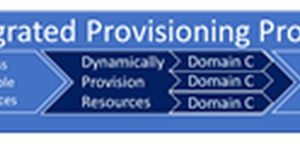
Whitepapers
Maximizing Efficiency Using Standards-Based, Model-Driven Infrastructures in NFV Deployments
Communication service providers (CSPs) are active participants in delivering cloud-based applications and flexible, scalable networking services based on virtualized network infrastructures. A critical success factor in supporting these services is the efficiency and speed with which CSPs can create and deliver them to their customers. A widely accepted belief among CSPs about achieving this efficiency is that their future infrastructures should be designed using architectures based on the abstracted, software-defined, general-purpose infrastructure philosophies pioneered by hyper-scale cloud and application delivery companies. These would provide the elastic and adaptable foundation their future service offerings require.
Although this strategy holds great promise, CSPs have important choices to make in how they pursue it. One of those choices is in the type of hardware they employ in enabling these diverse, software-driven offerings. There are significant differences in how alternative hardware platforms are designed and how they fare in enabling the efficiency, versatility and scale CSPs require. Options range from using openly architected, standards-based solutions built for integration and versatility in a software-driven world; to solutions built using significant amounts of proprietary design and which are more challenging to integrate in an open platform environment; and platforms developed using a bare essentials white-box approach.
In its use of a standards-based, open architecture philosophy for itsCSP portfolio, HPE has had a keen eye on the advantages this approach can deliver for the CSP. Still they need to be articulated and quantified. To accomplish this, HPE engaged with ACG Research to compare the total cost of ownership of the alternative approaches in CSPs’ deployments. This report describes the results of that analysis, which demonstrate significant economic advantages for CSPs when using the open architecture, standardsbased approach in their core and edge deployments for both NFV and cloudbased applications.
Click to download Maximizing Efficiency Using MDIs in CSP NFV Deployments.
You might like similar whitepapers


Coriant Groove™ G30 Disaggregated Platform Update: Market Impact Report

The Driving Factors behind the Telecommunications Shift to Cloud Metro Networks

Broadband Access Transformation

ECONOMIC BENEFITS OF THE VMWARE TELCO CLOUD AUTOMATION AND HORIZONTAL INFRASTRUCTURE

Mitigating Market Challenges in Telecommunications

The Economic Benefits of Juniper Apstra and CN2 in a Modern 5G Network

Lenovo: Data Center Switch Solutions for Enterprise Data Centers

5G Service Assurance: The Case for AIOps

Tunnel-Based versus Tunnel-Free SD-WAN

Always On, Active Analytics and AI for Superior Performance in Digitally Powered Enterprises

INTRODUCING xHAUL REWRITING THE PLAYBOOK FOR TRANSPORT NETWORKING IN THE RAN IN 5G

Orchestrating Dynamic Enterprise Services

Building the Business Case for AI in Wireless Networks: Juniper Mist AI TCO Report

Nuage/ALU on the VNS Solution in an SP Context

Using Open Virtual RANs in 5G

Huawei Autonomous Driving Network: Standards-Based but Differentiated

Propelling Operators to L3 Operations Autonomy and Beyond with Huawei ADN

The Economic Benefits of Distributed Broadband Services

Middle-Mile Networks Capacity Requirements for Fixed Broadband

AUTOMATING 5G ACCESS DEPLOYMENTS

An Approach to Offering Profitable Managed Network Services

The Economic Benefits of Routed Optical Networks for DCI, Metro, and Long-Haul Applications

THE ECONOMIC BENEFITS OF IP TRANSPORT AT 400G

Maximizing Efficiency Using Standards-Based, Model-Driven Infrastructures in NFV Deployments

Itential Vendor Profile: Automation and Orchestration for Multi-Domain Networks

The TCO Benefits of Dell’s Next-Generation Telco Servers

The Right Container Platform(s) for Modern OSS and BSS

Comparing Broadband Network Architectures in the Evolving Connectivity Landscape

The TCO Benefits of Distributed Broadband Services with CUPS

Segment Routing: An ACG Research Whitepaper

Coriant’s Multi-Sided Platform Partner Program: Market Impact Report

Achieving End-to-End Intelligence in the Cable Access Network

AUTONOMOUS NETWORKS POWER INDUSTRY 4.0

5G Service Assurance: The Case for AIOps

Simplifying IP Networks

TCO Benefits of Converged 5G Ready IP Transport

AUTONOMOUS NETWORKS: NOW IS THE TIME

Meet Market Needs with Software-Enabled Solutions

The Economic Benefits of Virtual Edge Services

MODERNIZING THE CABLE SERVICE DELIVERY INFRASTRUCTURE

Delivering Policy Continuity at Scale in Cloud IT and Managed Network Services

Hybrid Networks: Integrated Provisioning for Virtual and Physical Networks

Disruption Propelling Massive Changes in Video Market

The Missing Guide in SP Managed Services Profitability






